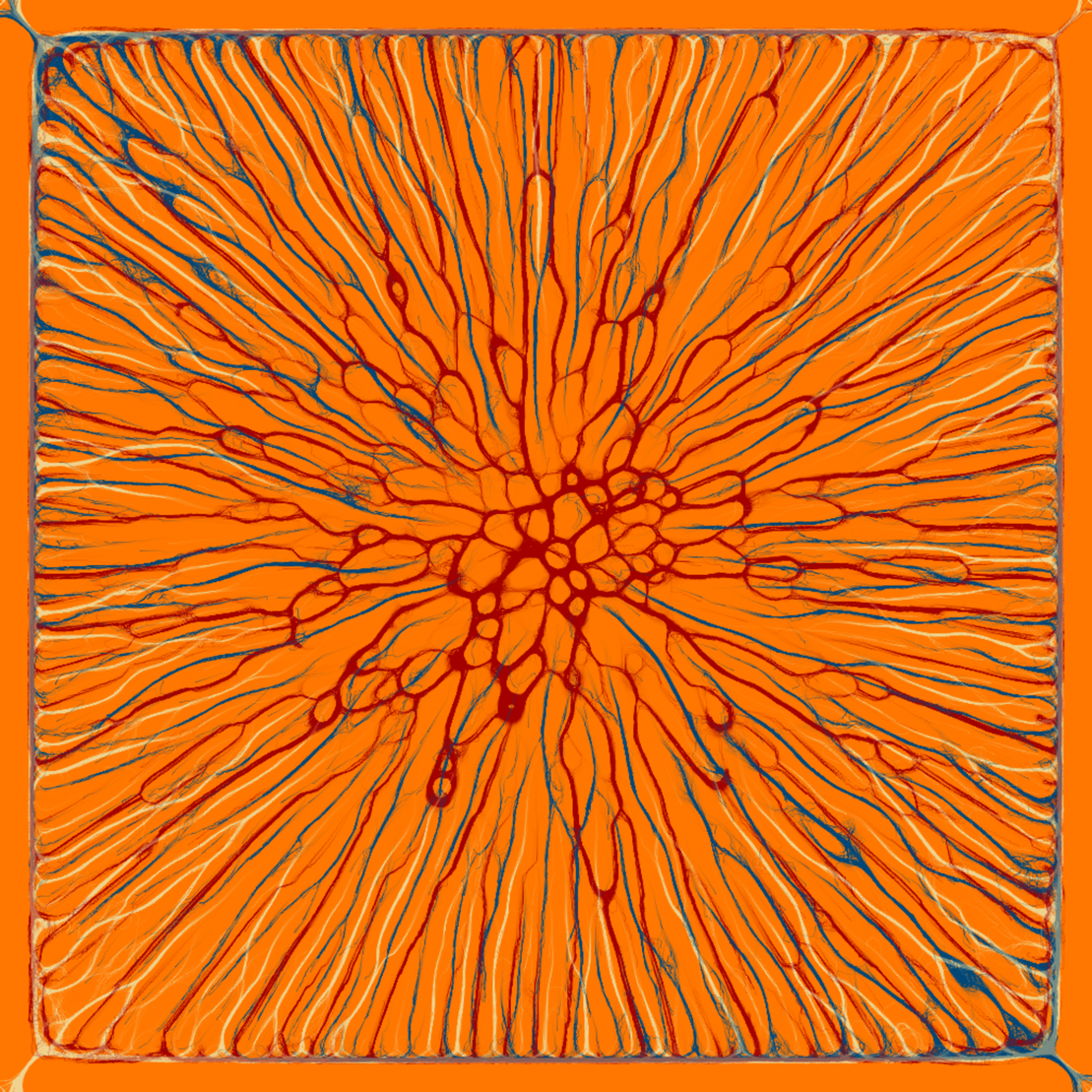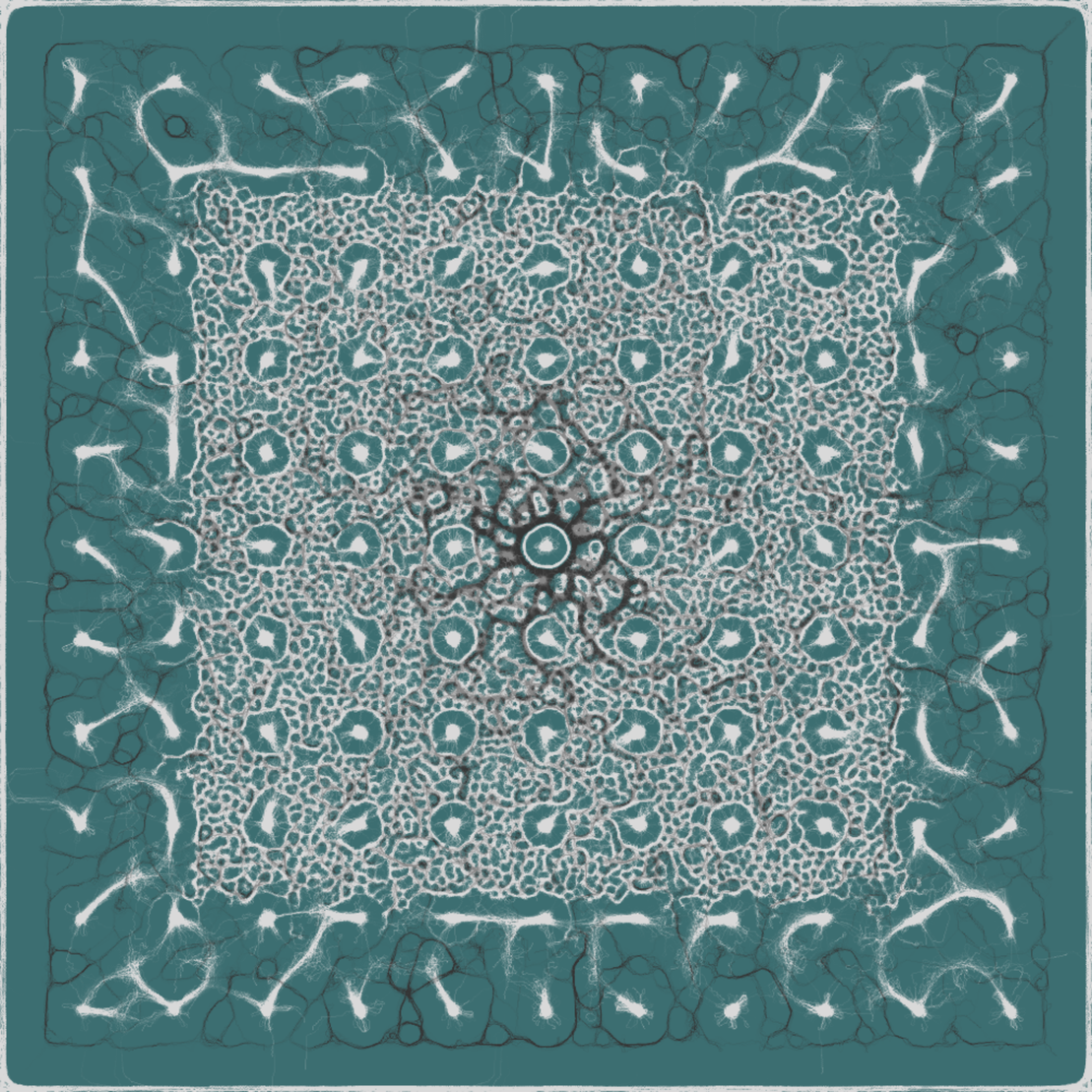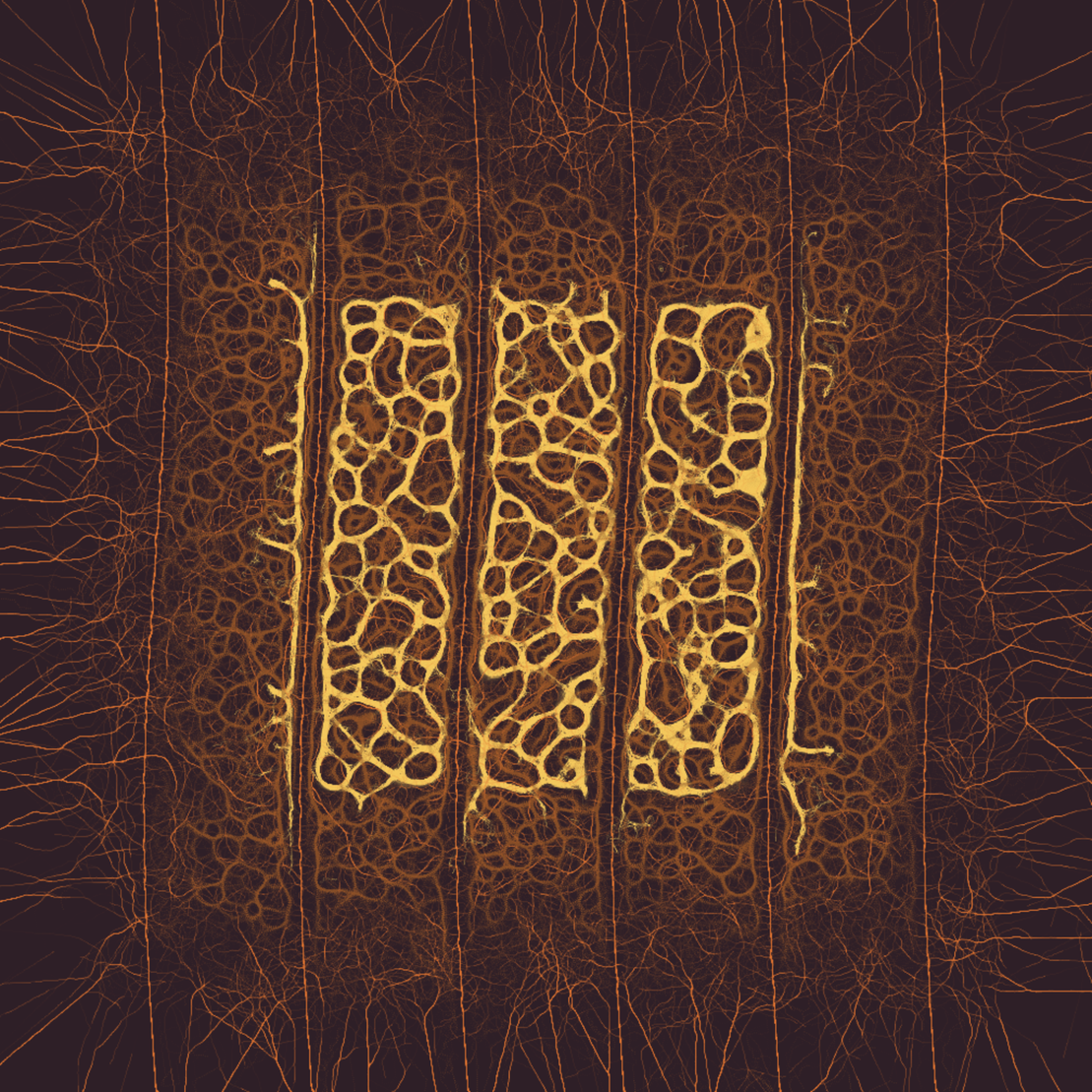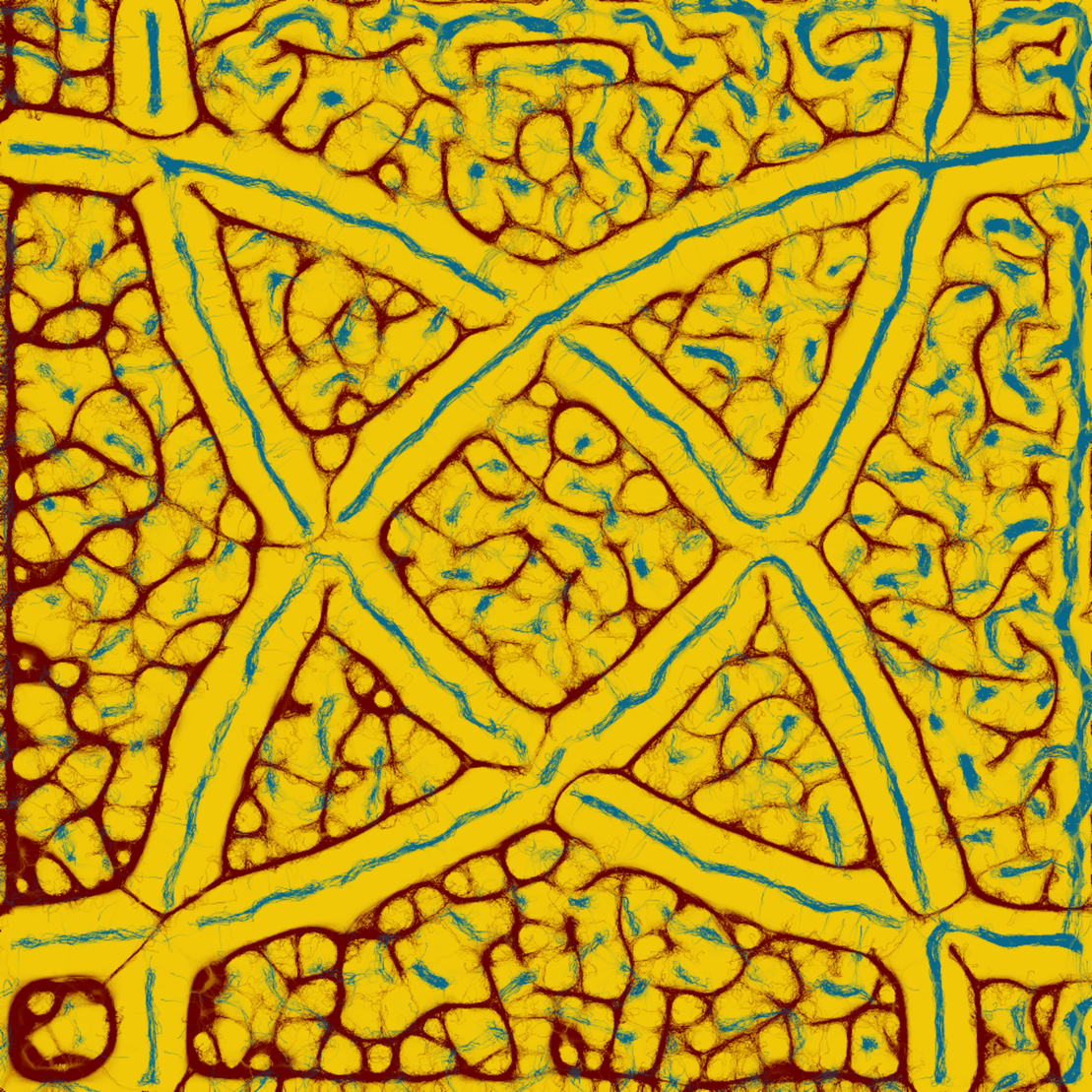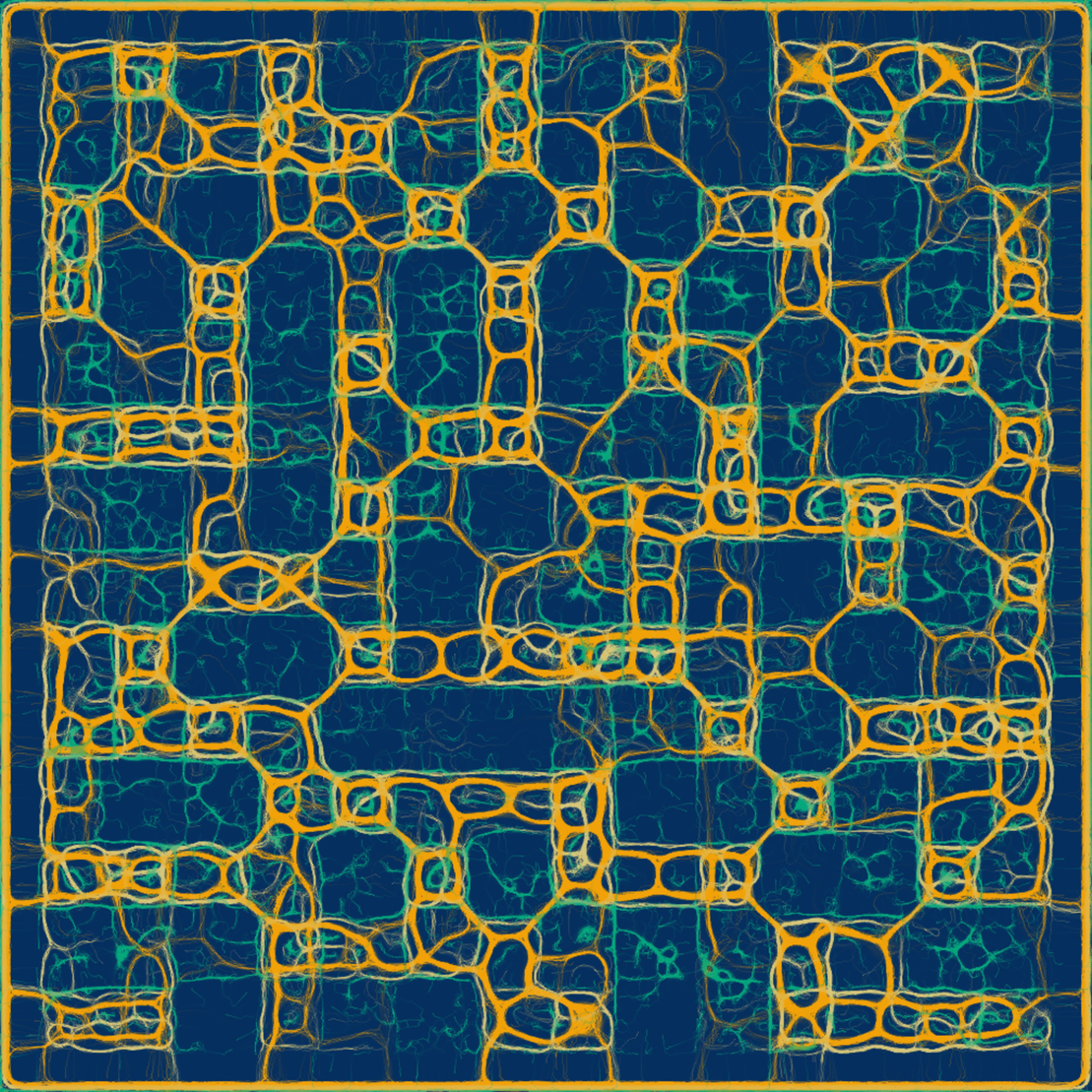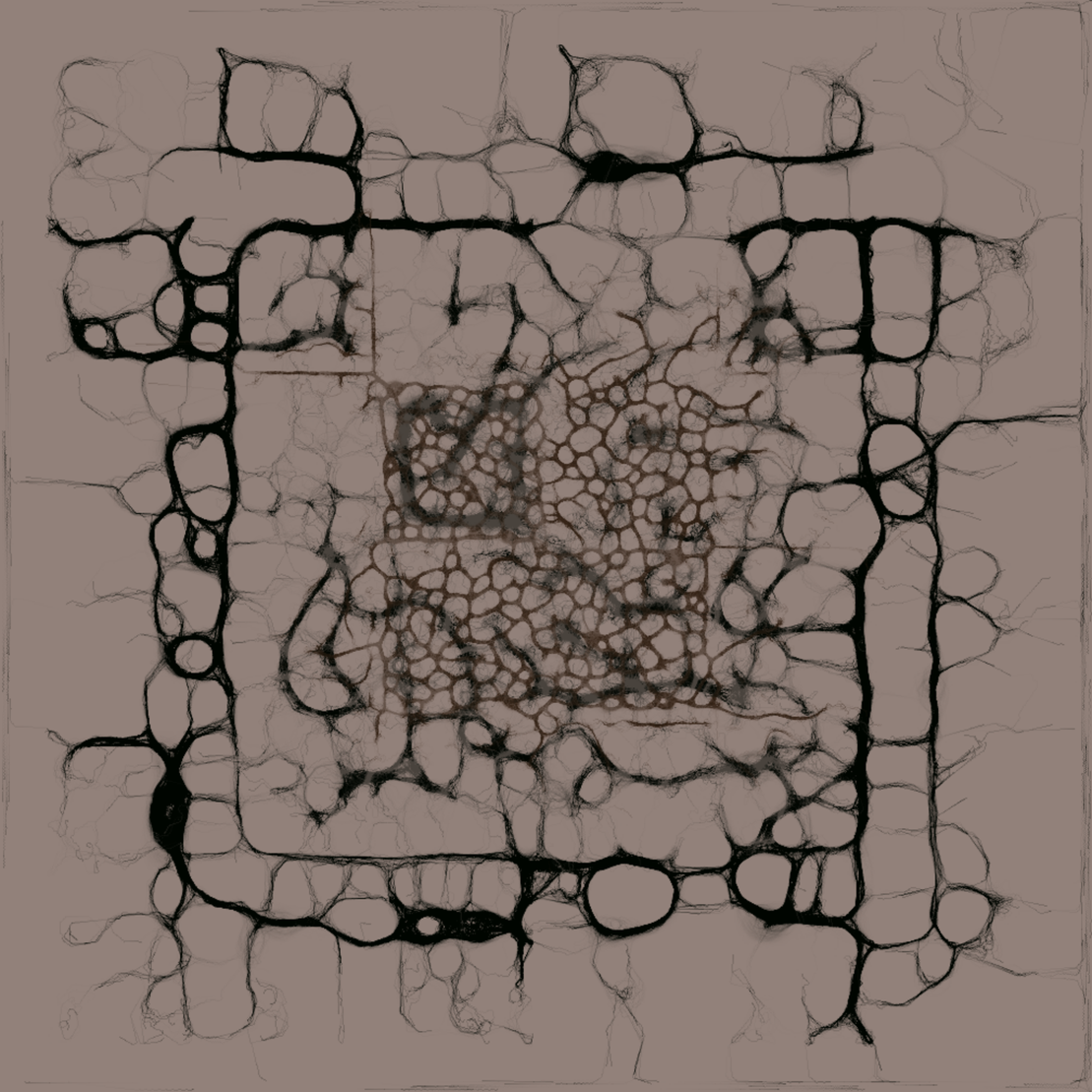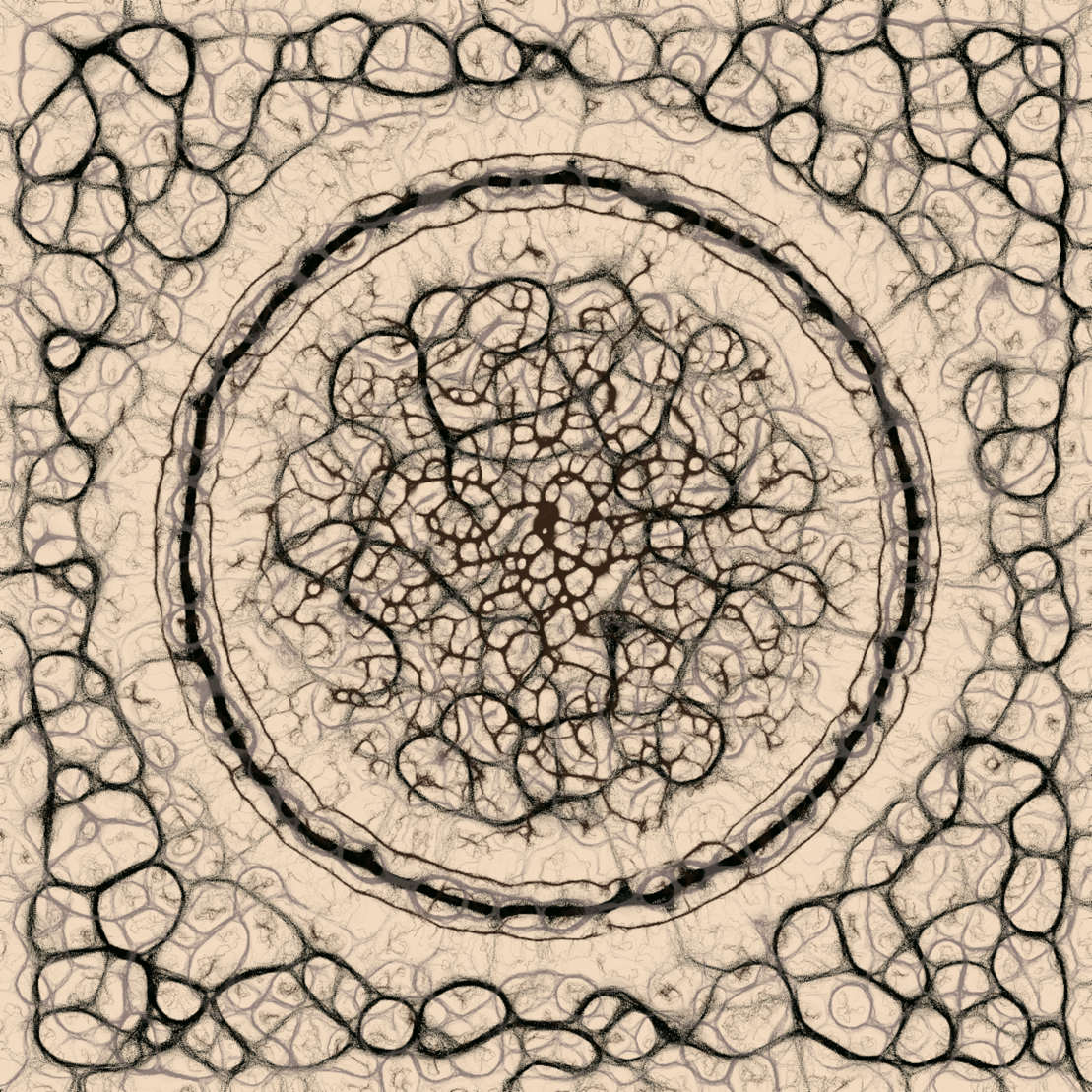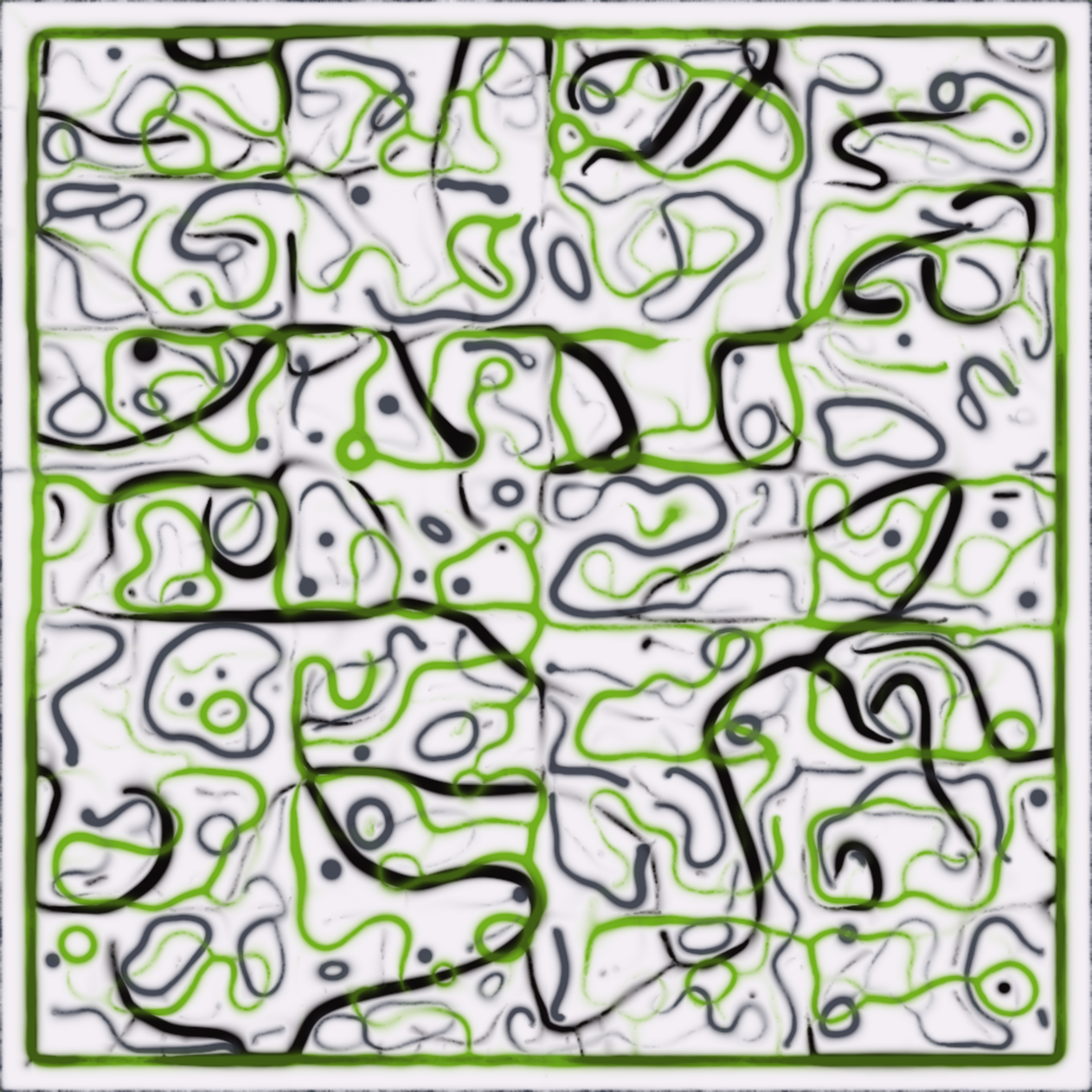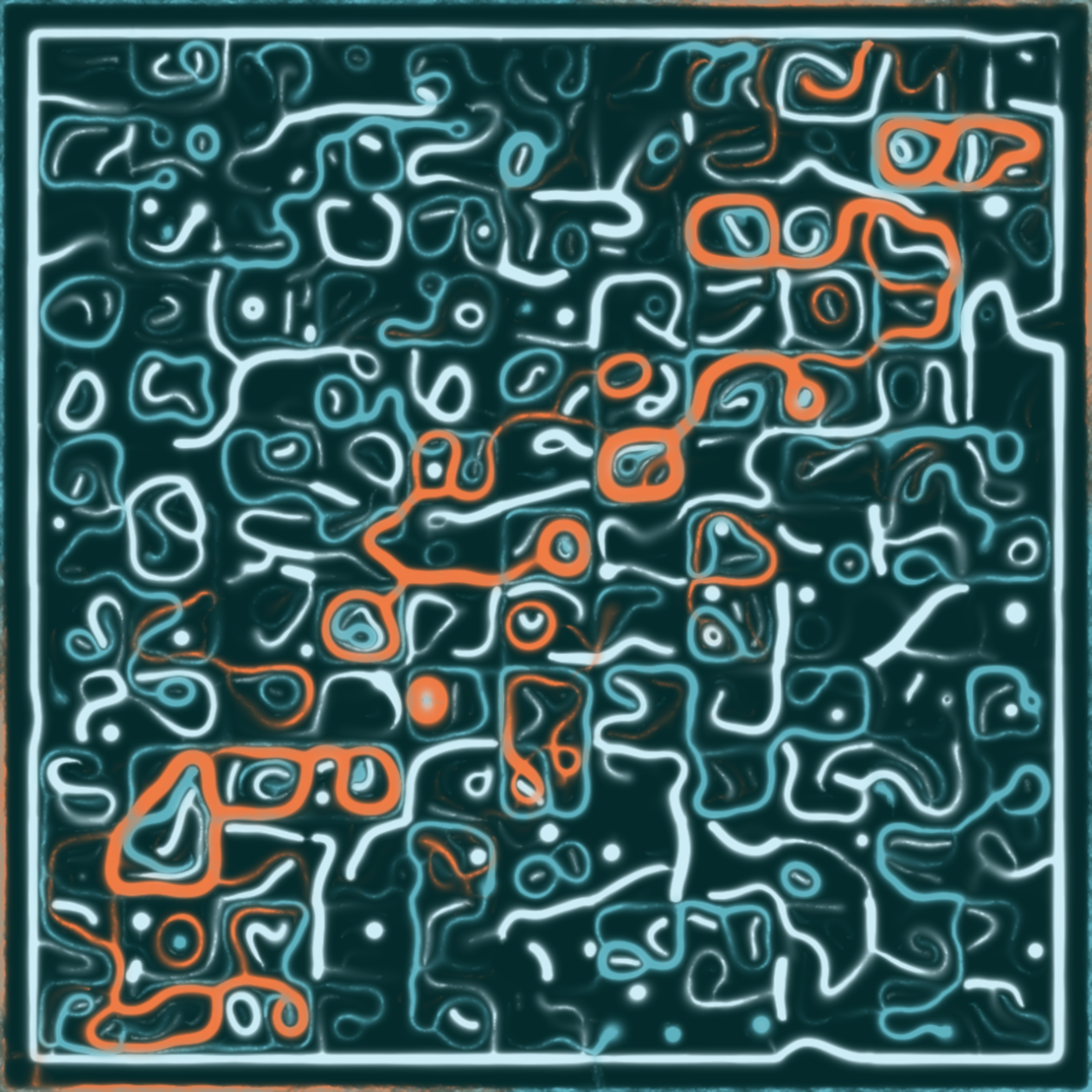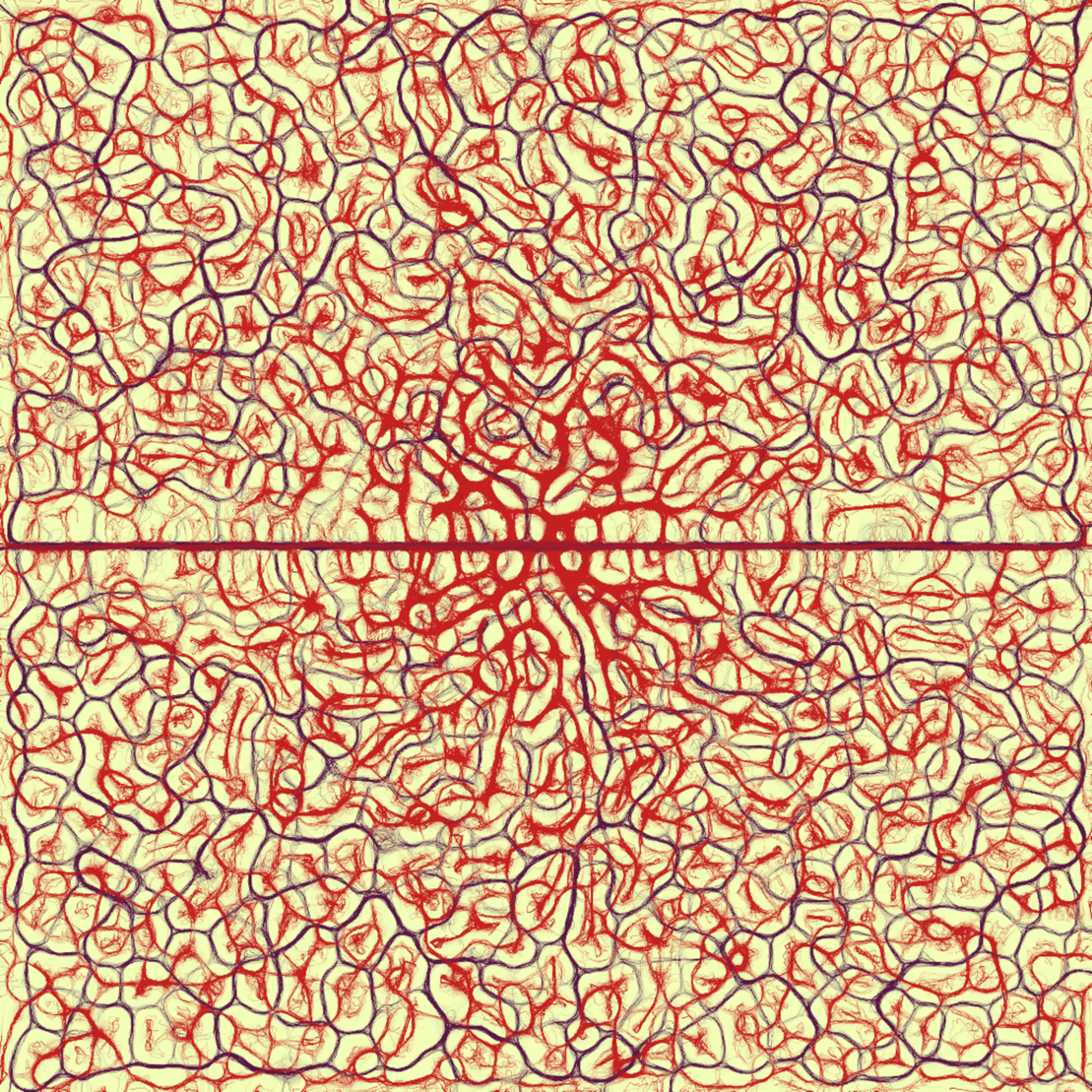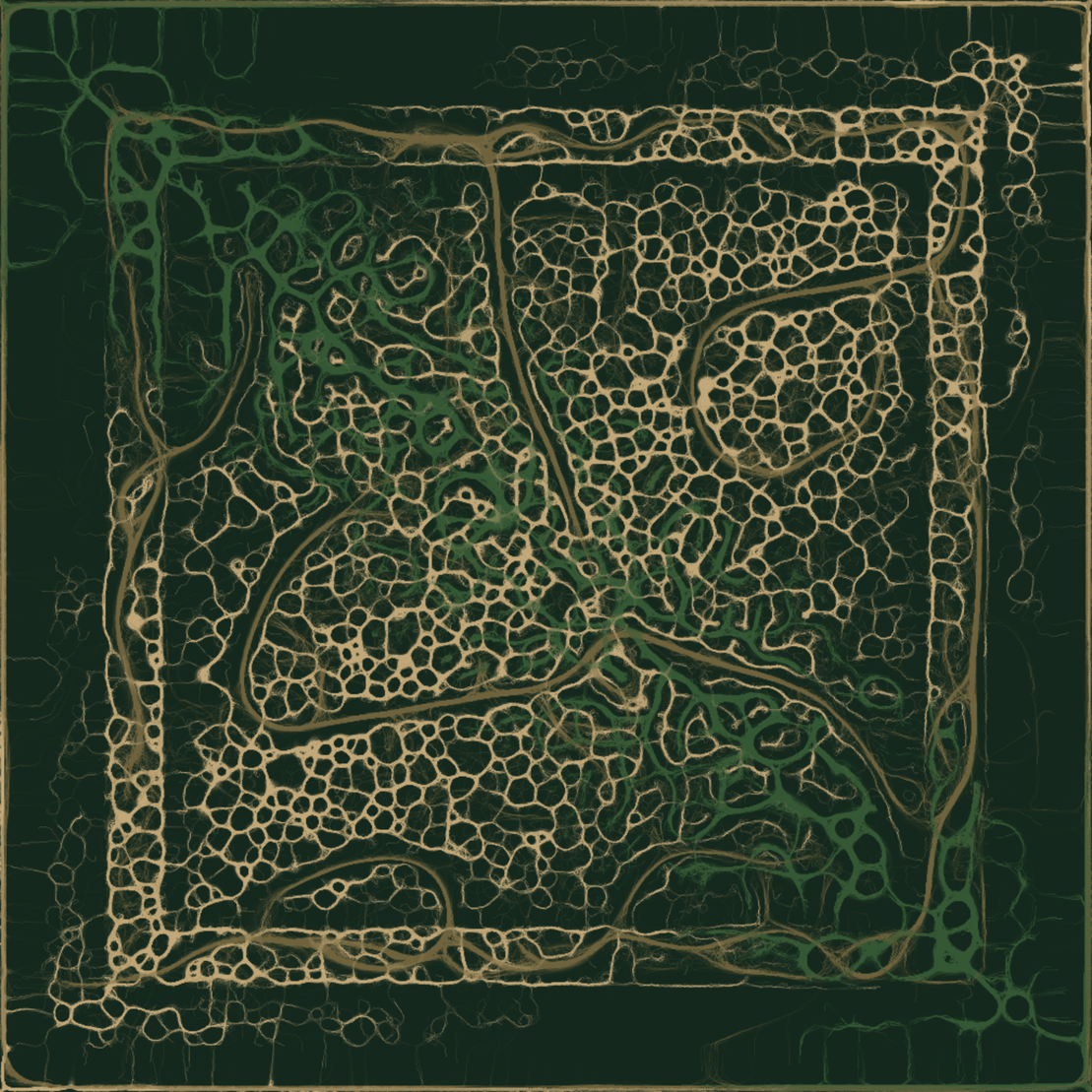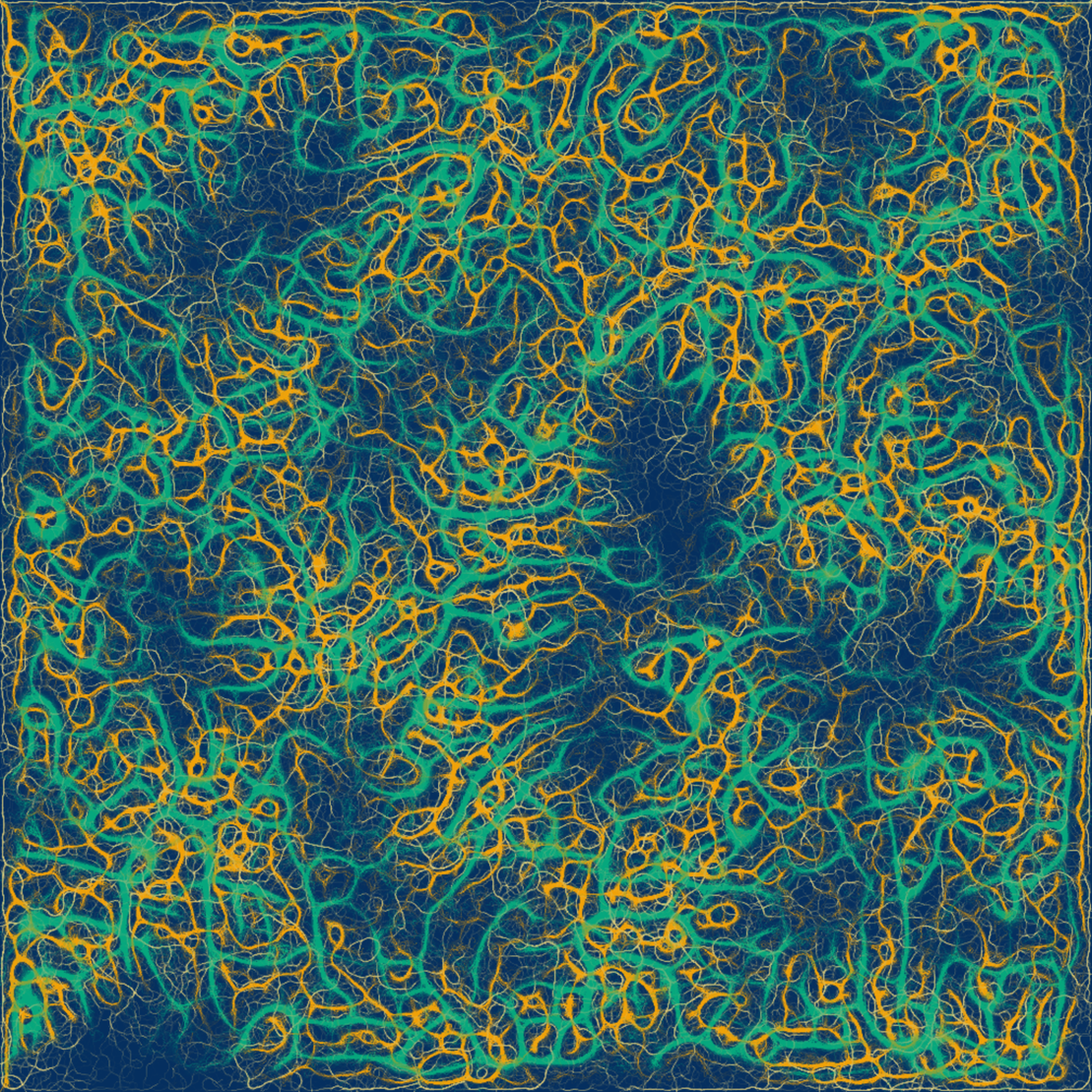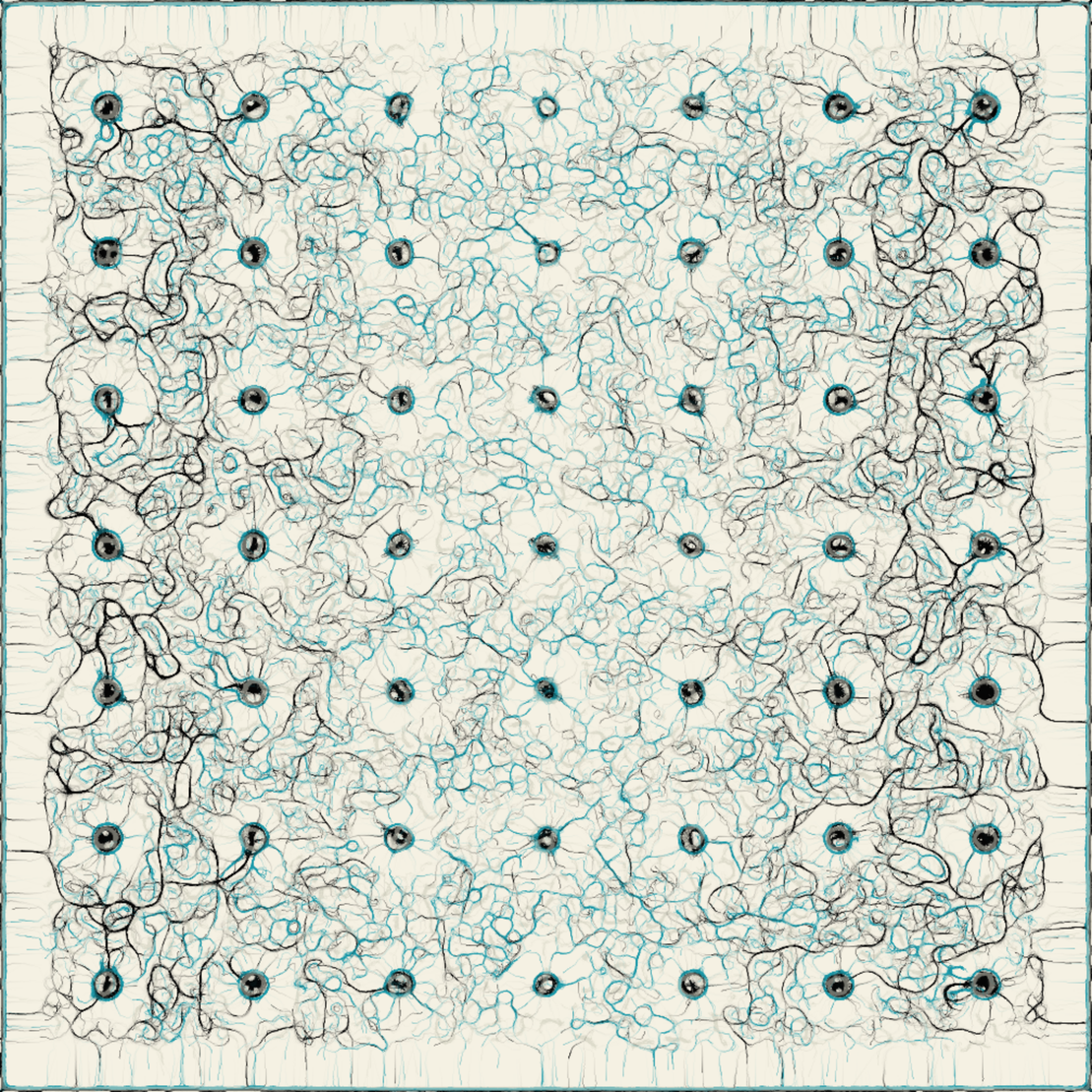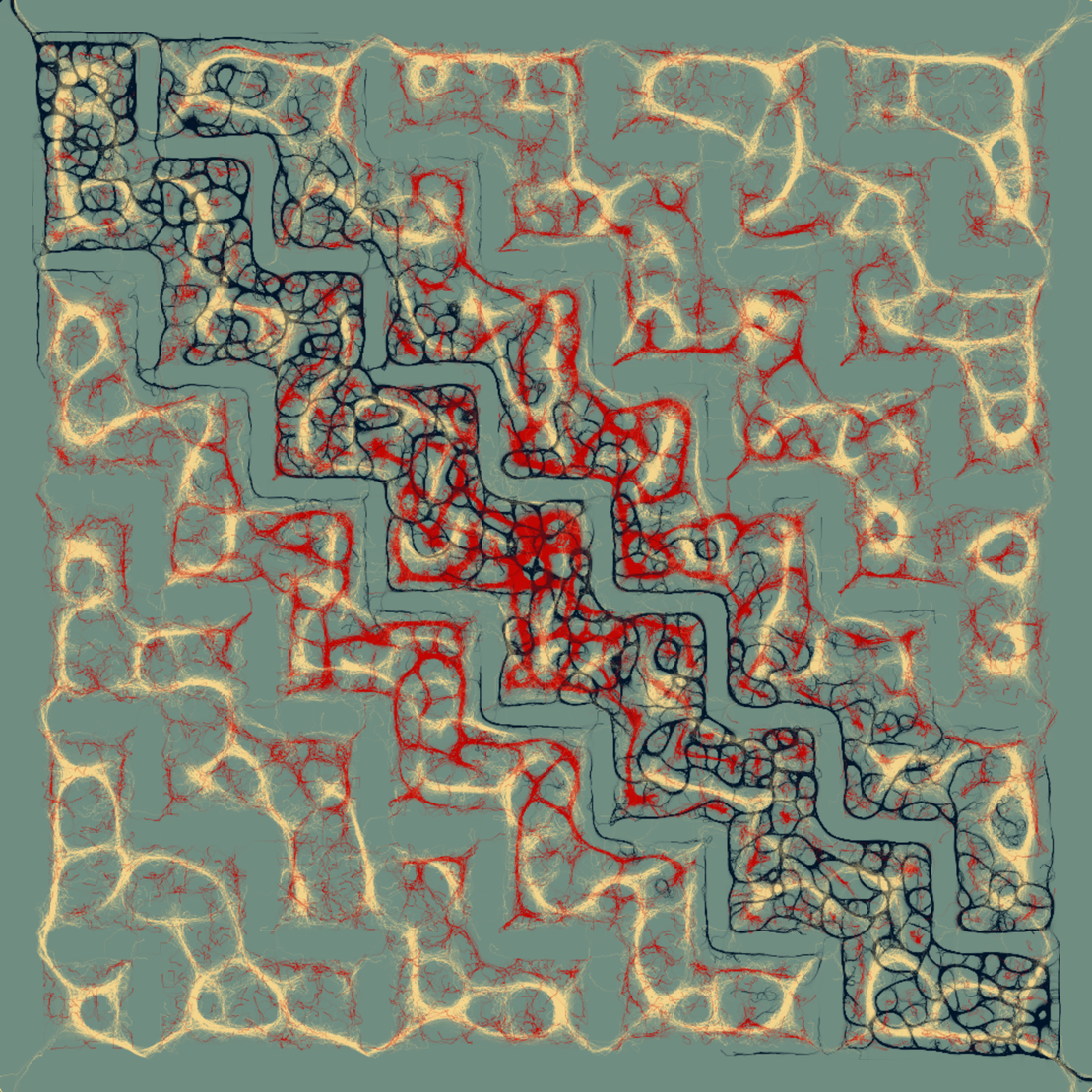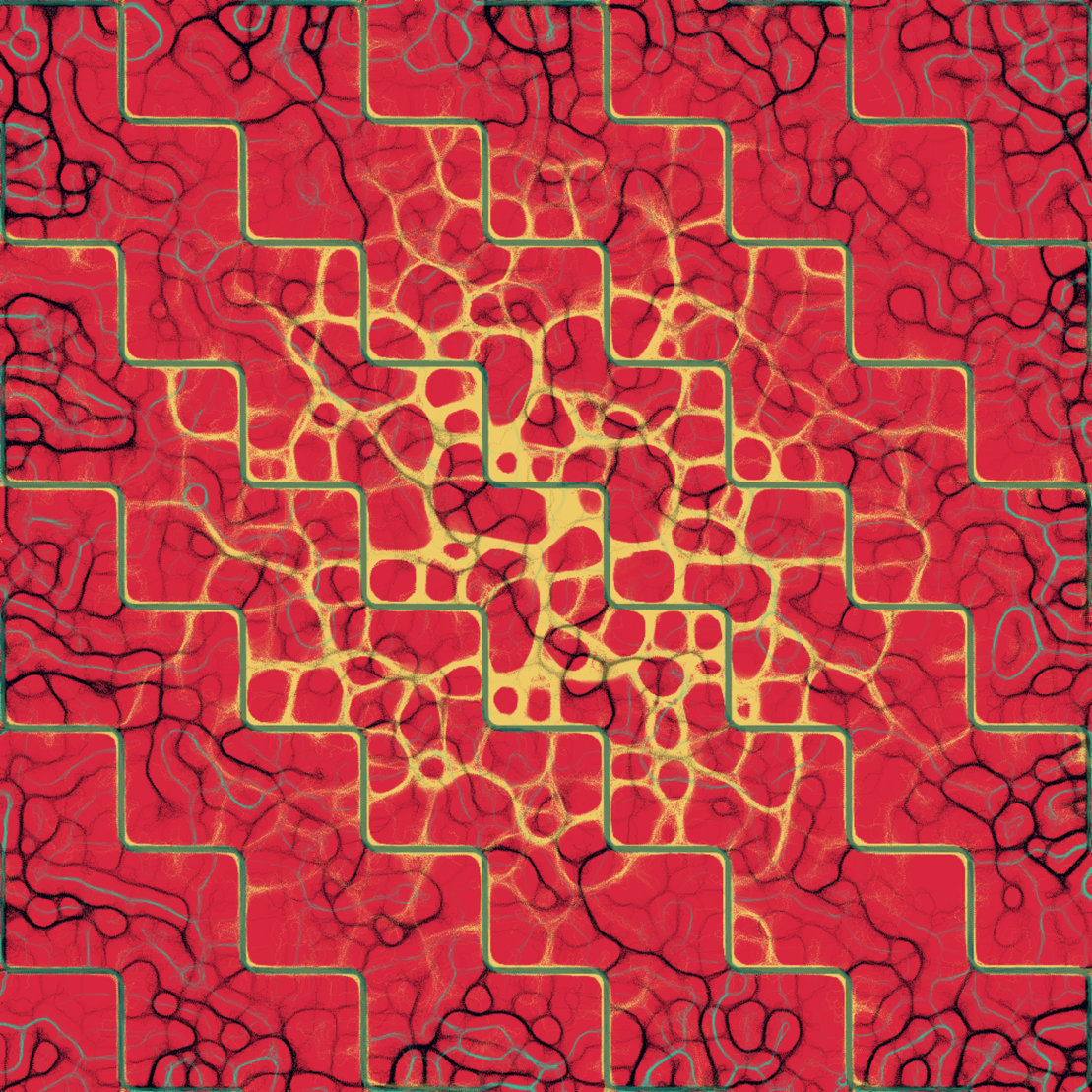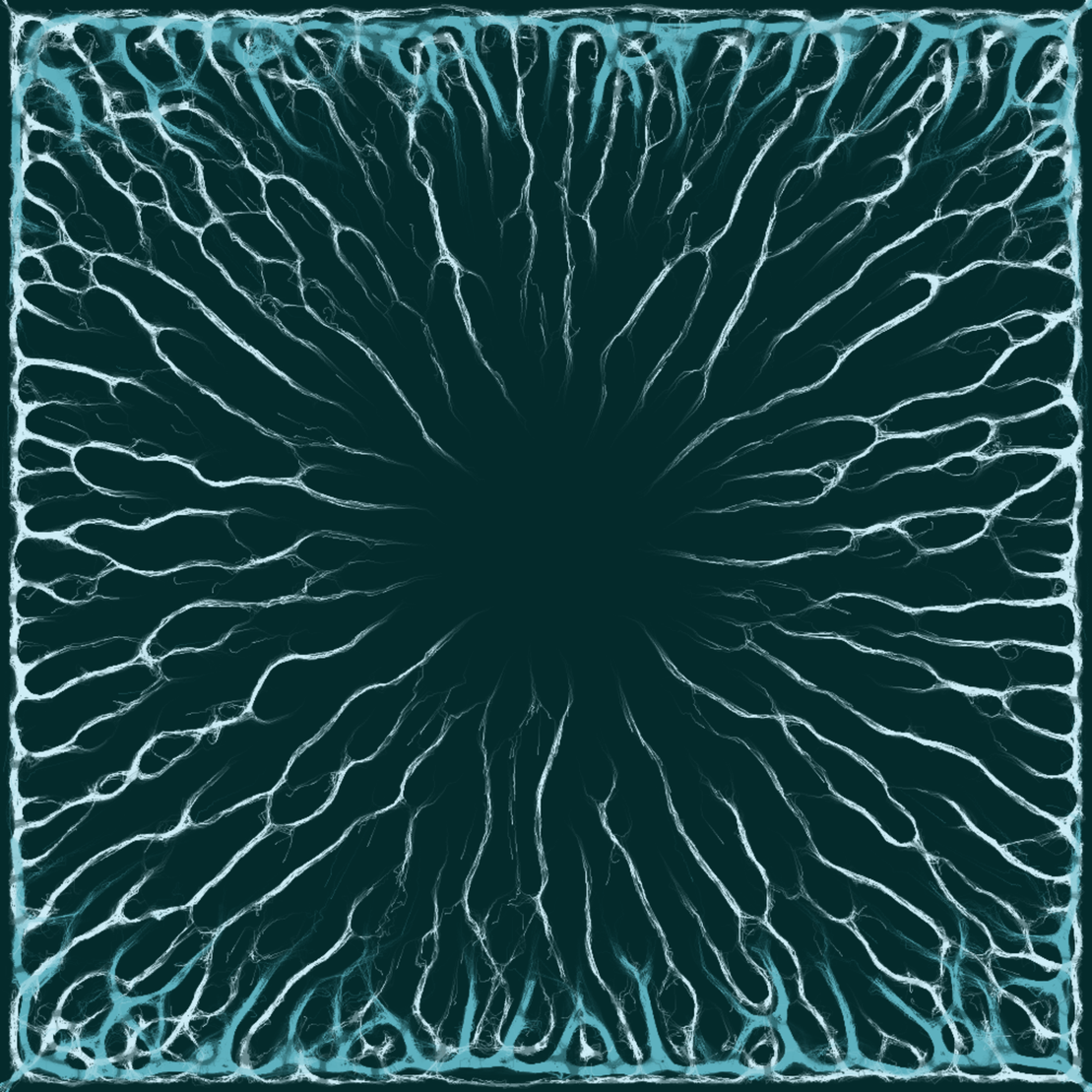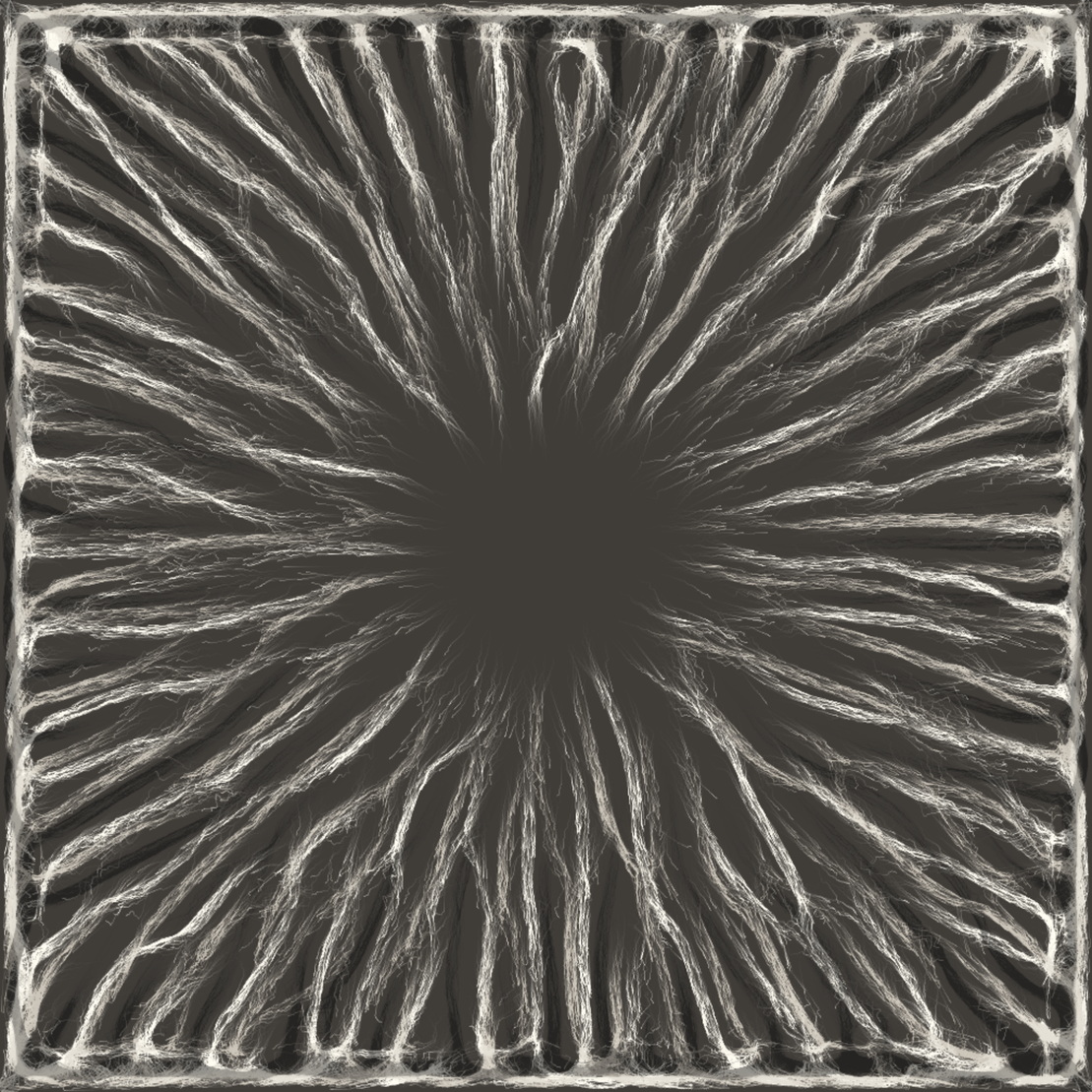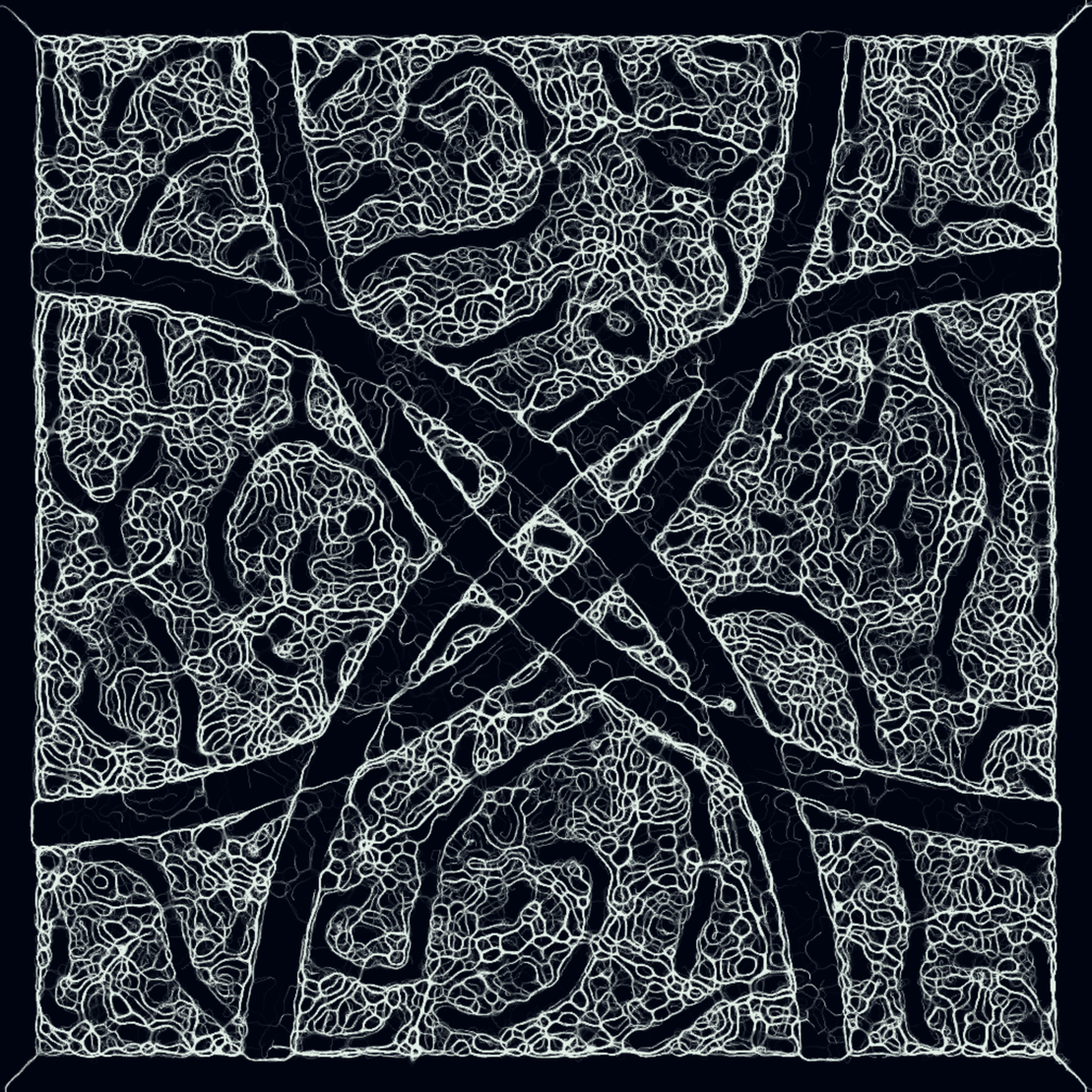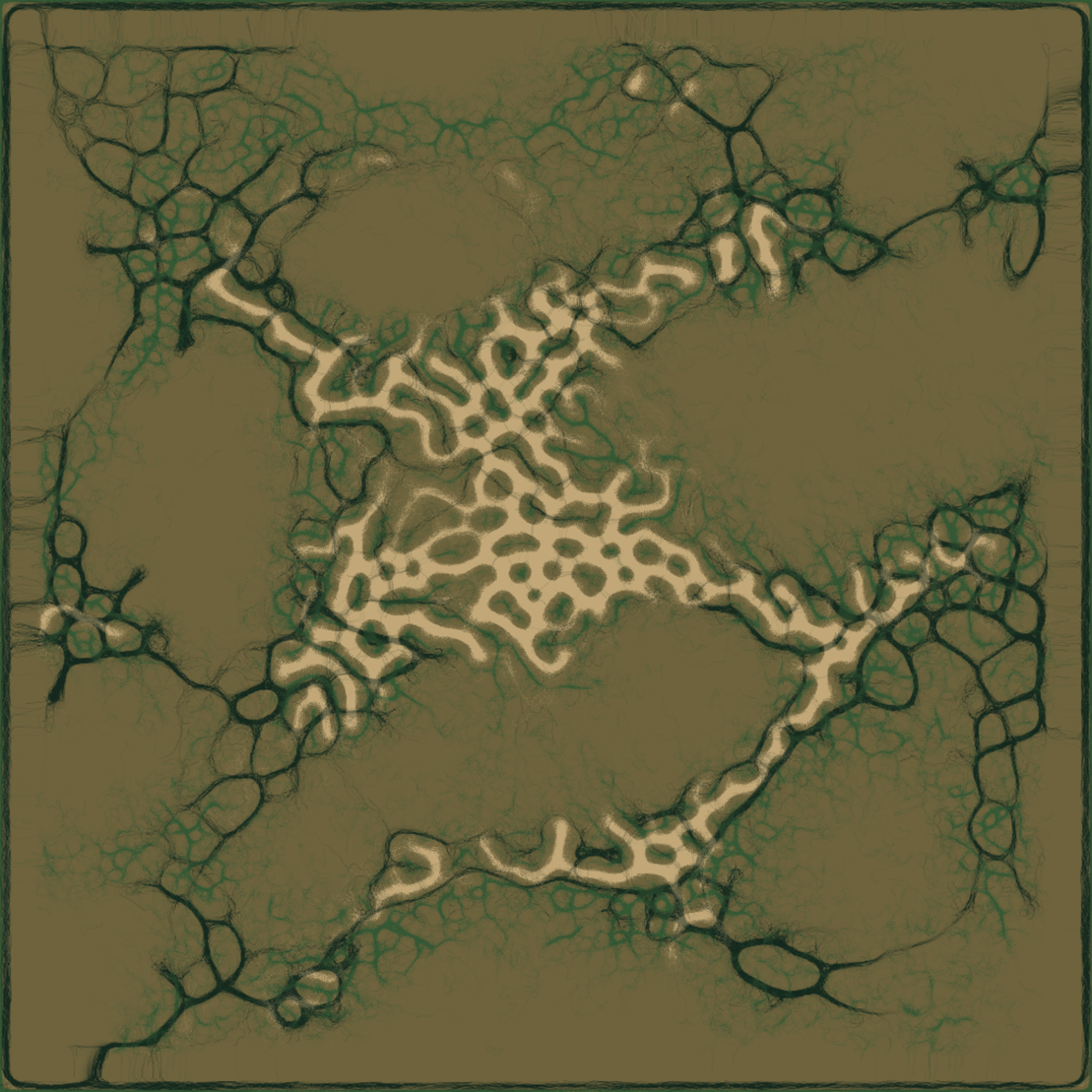by Gabriel
follow my lead
IPFS
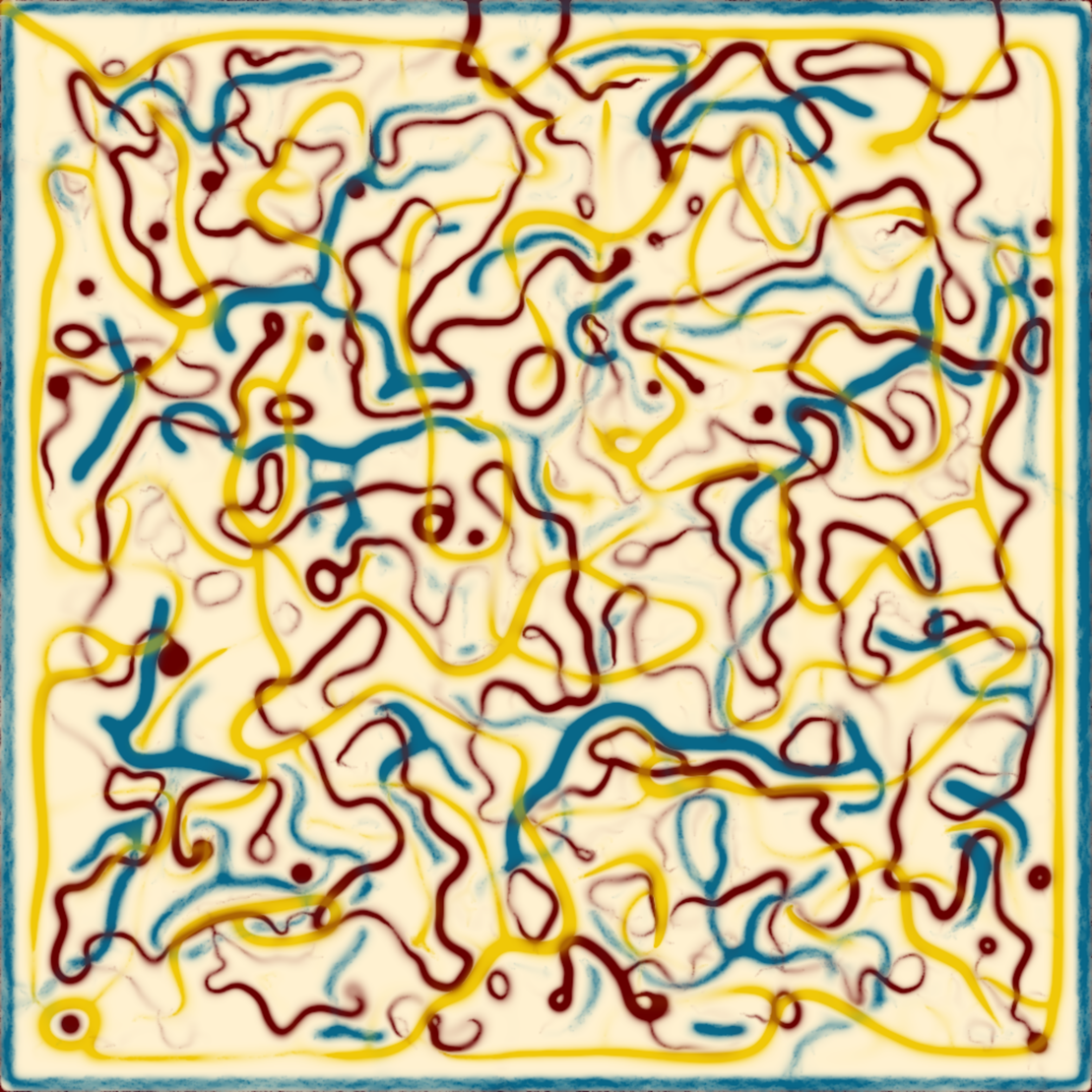
6 August 2023•TEZOS•IPFS
'follow my lead' is a visualization of three communities of individuals, and the ways in which they interact with each other.
Using an implementation of a physarum slime mold model, I create three distinct groups of homogenous individuals, with each group having different sentiments towards the others. Individuals within a community make their best effort to follow each other around, and depending on group preferences try to either move towards or away from those in other groups.
All of these interactions take place on a simulated three dimensional landscape (that varies by token), with groups of individuals having a preference towards either moving uphill or downhill.
Each group begins with a different spatial distribution, such that the extent of exposure to others can change over time.
For more details on the slime mold implementation and a link to the github repo containing the code, see the accompanying fx(text) article.
Animation
---------
This is designed first as a static piece. The final image consists of running 300 steps of the algorithm and then stopping.
However, I have also exposed a couple of ways to watch the image evolve over time. It should be noted that for some outputs, the image will eventually degenerate as we go well past the initial 300 frames.
Keys:
- space: Pauses/unpauses the animation
- 'F': Fresh start - reloads the page and animates the first 300 frames, pausing when finished (or append &fresh=true to the URL)
- 'A': Animate - reloads the page and animates in perpetuity (or append &animate=true to the URL)
WebGL
-----
This piece makes heavy use of shaders/WebGL. I've put quite a lot of time/effort into trying to ensure things behave identically across different browsers/hardware. I've managed to get things to the point where I was consistently seeing identical outputs on the set of hardware available to me. However, there is still a risk that on other hardware specs, things will not be identical. Furthermore, it is the nature of this project that even very small differences in calculations can become exaggerated after multiple steps of the algorithm, leading to larger differences in the final result.
References:
Jeff Jones's Physarum paper: https://uwe-repository.worktribe.com/output/980579
Sage Jensen's post on Physarum, which was my first exposure to it: https://cargocollective.com/sagejenson/physarum
Color names generated using coloraze: https://github.com/evansque/coloraze
Using an implementation of a physarum slime mold model, I create three distinct groups of homogenous individuals, with each group having different sentiments towards the others. Individuals within a community make their best effort to follow each other around, and depending on group preferences try to either move towards or away from those in other groups.
All of these interactions take place on a simulated three dimensional landscape (that varies by token), with groups of individuals having a preference towards either moving uphill or downhill.
Each group begins with a different spatial distribution, such that the extent of exposure to others can change over time.
For more details on the slime mold implementation and a link to the github repo containing the code, see the accompanying fx(text) article.
Animation
---------
This is designed first as a static piece. The final image consists of running 300 steps of the algorithm and then stopping.
However, I have also exposed a couple of ways to watch the image evolve over time. It should be noted that for some outputs, the image will eventually degenerate as we go well past the initial 300 frames.
Keys:
- space: Pauses/unpauses the animation
- 'F': Fresh start - reloads the page and animates the first 300 frames, pausing when finished (or append &fresh=true to the URL)
- 'A': Animate - reloads the page and animates in perpetuity (or append &animate=true to the URL)
WebGL
-----
This piece makes heavy use of shaders/WebGL. I've put quite a lot of time/effort into trying to ensure things behave identically across different browsers/hardware. I've managed to get things to the point where I was consistently seeing identical outputs on the set of hardware available to me. However, there is still a risk that on other hardware specs, things will not be identical. Furthermore, it is the nature of this project that even very small differences in calculations can become exaggerated after multiple steps of the algorithm, leading to larger differences in the final result.
References:
Jeff Jones's Physarum paper: https://uwe-repository.worktribe.com/output/980579
Sage Jensen's post on Physarum, which was my first exposure to it: https://cargocollective.com/sagejenson/physarum
Color names generated using coloraze: https://github.com/evansque/coloraze
256 EDITIONS
•0 RESERVES
minted
256 / 256
dutch auction
2 TEZ
Lorem ipsum project longer longer
0.00001 ETH
Lorem ipsum project longer longer
0.00001 ETH
Lorem ipsum project longer longer
0.00001 ETH
Lorem ipsum project longer longer
0.00001 ETH
Lorem ipsum project longer longer
0.00001 ETH
Lorem ipsum project longer longer
0.00001 ETH
Lorem ipsum project longer longer
0.00001 ETH
Lorem ipsum project longer longer
0.00001 ETH
Lorem ipsum project longer longer
0.00001 ETH
Lorem ipsum project longer longer
0.00001 ETH
Lorem ipsum project longer longer
0.00001 ETH
Lorem ipsum project longer longer
0.00001 ETH
Lorem ipsum project longer longer
0.00001 ETH
Lorem ipsum project longer longer
0.00001 ETH
Lorem ipsum project longer longer
0.00001 ETH
Lorem ipsum project longer longer
0.00001 ETH
Lorem ipsum project longer longer
0.00001 ETH
Lorem ipsum project longer longer
0.00001 ETH
Lorem ipsum project longer longer
0.00001 ETH
Lorem ipsum project longer longer
0.00001 ETH
Lorem ipsum project longer longer
0.00001 ETH
Lorem ipsum project longer longer
0.00001 ETH
Lorem ipsum project longer longer
0.00001 ETH
Lorem ipsum project longer longer
0.00001 ETH
